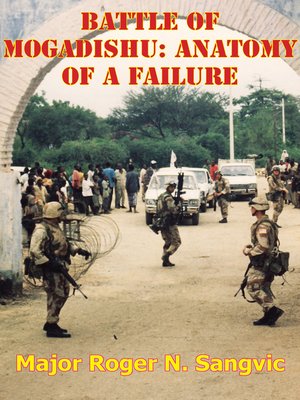
Sign up to save your library
With an OverDrive account, you can save your favorite libraries for at-a-glance information about availability. Find out more about OverDrive accounts.
Find this title in Libby, the library reading app by OverDrive.



Search for a digital library with this title
Title found at these libraries:
| Library Name | Distance |
|---|---|
| Loading... |
By applying Cohen and Gooch's model to the Battle of Mogadishu, this paper shows that the failure of the TFR mission on 3-4 October 1993 was the result of a system failure. Secretary Aspin received far more blame than he deserved for making the decision. Misperception of the real impact tanks and APCs could have had on the overall mission is the real cause of this disproportionate blame. GEN Hoar and GEN Powell, in addition, bear as much responsibility as Secretary Aspin for the decision. Neither of these generals strongly advocated the deployment to Aspin even though the worsening situation on the ground merited their strong support. Both Hoar and Powell's approval recommendations can be characterized as lukewarm. Aspin's real failure was of not being more critical of the conduct of the TFR operations. In light of Secretary Aspin's acknowledged concern over the number of similar operations conducted by TFR and his knowledge that the Administration was seeking a political solution, he should have notified MG Garrison of the policy shift though the JCS and CINCCENT and provided additional guidance on risk. Had Aspin either reassessed the risk of each TFR operation more thoroughly or done a better job coordinating the policy shift in light of the increased risks, it is likely that the three October raid would not have occurred.







